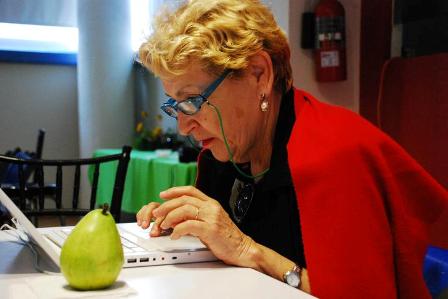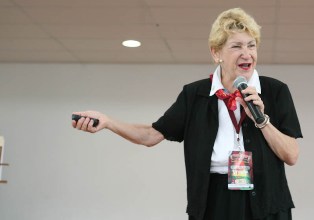 Compiled by Elaine Gallagher
Compiled by Elaine Gallagher
Teachers: Place one of these questions each day on the board or on a poster. Have children guess the answers, or look up the answers, or ask someone at home the answers. Some items, the students will know immediately. Others, they may have to ask at home and tell you the next day.
OBJECTIVE: To stimulate curiosity and to encourage children to be challenged with various «trivia» questions. They love them!
1. All living things are divided into categories or kingdoms. Two kingdoms are plants and animals. Let’s look at the animal kingdom. Animals are divided into two types: _ _ _ _ _ _ _ _ _ _ _ _ (13 spaces) and _ _ _ _ _ _ _ _ _ _ _ (11 spaces). What are they?
Invertebrates, which are animals that do not have a backbone / spine, such as a worm, and vertebrates, which are animals that DO have a backbone, such as a human, or a dog.
2. How many figs are in the circle?
(NOTE TO TEACHER: draw a circle around these letters, keeping the letters organized the way I have them here.)
f f f
r i g
g g g
ANSWER: ONE ( There is only one i to spell fig.)
3. How many fruits are hidden in this line of 25 letters?
figfruitspeachtomatorange
ANSWER: four (fig, fruits, peach, and either tomato or orange). There is only one O, so you use the O to end tomato, or to begin orange…but not both.
4. One type of invertebrate is a common insect. Some people say it has 100 legs…..(It really does NOT have that many legs…but they look like they do.) What is it called?
A centipede ….Centi means 100; ped means foot.
EXTRA: Then see if you can find a picture of a centipede in the Internet or a book. Draw one…or draw 100 as a group project: «100 centipedes».
5. Here are some clues about a few invertebrates. Can you guess what they are? Look up their pictures in a book or Internet if you have time.
- A honey of an invertebrate………..? a honey bee
- Always a lady………………………….? a ladybug
- Likes to chirp at night……………….? a cricket
- An uninvited picnic guest………….? an ant
6. What is the largest land animal in the world? It is a vertebrate…a mammal:
ANSWER: An elephant
7. Mystery Vertebrates: Name the vertebrates from the clues given:
- Flies, sonar, large ears for the size of its body…… a bat
- King of the jungle, appeared in the book and the movie «The Wizard of Oz»…… a lion
- Hops, has a pouch for its babies, lives in Australia…… a kangaroo
8. What is the largest mammal on Earth? (Remember: all mammals have a backbone, so they are vertebrates.)
ANSWER: A whale
9. What does this mean? Can you find a pattern to the numbers?
2 – 15 – 14 – 5 – 19
ANSWER: These numbers spell BONES. The numbers correspond to the letters of the alphabet….Letter # 2 is B, an so on…
10. Which bone protects the brain? C _ _ _ _ _ _
ANSWER: The cranium
11. What is the largest bone in the human body? The _ _ m _ _
ANSWER: the femur (which is in the leg… sometimes it’s called the thigh bone.)
12. Name two important sporting events that are popular in Mexico and in Spain.
ANSWER: bullfighting and soccer (football)
13. Which vertebrate animal has many sharp quills which can stick to enemies that try to attack this animal. What is it? Can you draw a picture of one?
ANSWER: A porcupine
14. How would you like to receive a check for 5000 dollars from a fictitious company called Seedmore Brothers? All you have to do is name three different fruits/vegetables that might be ingredients for their new product: ABC Healthy Punch.
The name of each fruit or vegetable must begin with the letters,
a, b, or c. You may not use apple, apricot, berry, or cherry.
By the way, the fruit punch tastes terrible!
A________________ B________________ C______________
ANSWER: One possibility is A- avocado, B- bean, C-cucumber
Your students may come up with other words.
15. What famous explorer from Italy started a great age of exploration and conquest for Spain?
ANSWER: Christopher Columbus from Italy…In 1492, when Spain was still powerful, Columbus led Spain to the New World. It was almost 100 years later (1588) that Spain’s armada, the navy, was defeated by England.
16. What item should you have with you if you go camping? It helps you find directions and points to the NORTH. After you guess its name, draw a picture of one showing the 4 main directions on the Earth.
ANSWER: A compass
17. What vertebrate animal lives near water and uses its large, sharp teeth to cut down small trees? It uses the wood from the trees to build a lodge (its house) by the water.
ANSWER: A beaver
18. What is a pelican? What is the most unique thing about a pelican? Can you draw its picture?
ANSWER: It is a large, usually white, bird. It’s bill is very large, about 18 inches (1/2 meter) long. The bill is used to catch fish to eat.
19. What does the word goober mean? (It is an English word, not another language.)
ANSWER: GOOBER is another word for PEANUT.
20. What vertebrate, a mammal, always is ready to take a long trip or journey ?
ANSWER: An elephant, because it always has its trunk. (A TRUNK is a very large suitcase, used to pack things for a long trip.)
NOW, TEACHERS, FIND MORE IN THE INTERNET OR BOOKS OF TRIVIA FACTS. STUDENTS LOVE TO HAVE THESE CHALLENGES!
Teachers:
These quotations are for you, to think about, to focus on, to expand or support your own thoughts.
They can also be used for older students. Write one on the board or on a poster, and keep it up for a week or two…so students, too, can think, discuss, and focus on profound ideas, expanding them or absorbing them into the students’ lives.
==============================================================================================
“True satisfaction comes from getting the job done. The key to a successful leader is to earn respect–not because of rank or position, but because you are a leader of character.”
Major Richard Winters
==============================================================================================
“Act as if what you do makes a difference. It does.”
William James
==============================================================================================
“The limits of my language are the limits of my world”.
Ludwig Wittgenstein
==============================================================================================
BEING BILINGUAL:
A tangible competitive advantage
==============================================================================================
I should never have to entice you to use your own potential.
==============================================================================================
Inquiring minds want to know.
Inquiring minds NEED to know.
==============================================================================================
Don’t be afraid to fail.
Be afraid not to try.
==============================================================================================
“If you don’t like something, change it.
If you can’t change it, change your attitude.”
Maya Angelou
==============================================================================================
“Imagination sets the goal-picture which our automatic mechanism works on.
We act, or fail to act, not because of will, as is so commonly believed, but because of imagination.”
Maxwell Maltz
==============================================================================================
Thanks to all the Teachers
“Thanks to all the teachers that have inspired, challenged and changed our lives. A good education is no longer just one road to opportunity — it is the only road. And good teachers aren’t just critical for the success of our students; they are the key to the success of our economy.”
Michelle Obama First Lady of the United States of America==============================================================================================
“I can’t understand why people are frightened of new ideas. I’m frightened of the old ones.”
John Cage
==============================================================================================
“You hit home runs not by chance but by preparation.”
Roger Maris
==============================================================================================
«Never deprive someone of hope. It may be all that he or she has.”
Josh Hardy, from New Hampshire, who died of brain cancer in 1992 , at age 17==============================================================================================
“The future doesn’t just happen;
it is shaped and modeled by our actions.”
David Marsh (The «father» of CLIL)
==============================================================================================
“What doesn’t kill us makes us stronger.”
Friedrich Nietzsche
==============================================================================================
«We are the architects of our own destiny.»
Amado Nervo
==============================================================================================
«It’s not our abilities that show what we are, but our choices.”
Spoken by Headmaster, Albus Dumbledore, to Harry Potter, in the book and movie, «Harry Potter and the Chamber of Secrets».==============================================================================================
The only thing for the triumph of evil, is that good men do nothing.
==============================================================================================
READERS ARE LEADERS.
==============================================================================================
What you read shows the level of your culture.
==============================================================================================
Our level of development is fairly obvious with tennis or piano playing, where it is impossible to pretend. But it is not so obvious in the areas of character and emotional development.
==============================================================================================
DEPTH & COMPLEXITY…
“A quality program should be available to ALL kids….but gifted/talented kids can do it to more depth and complexity.”
(NOT more work for gifted kids….but deeper and more complex work.)
Dr. Sandra Kaplan
==============================================================================================
Admission of ignorance is often the first step in our education.
==============================================================================================
If you don’t let a teacher know at what level you are, by asking questions, or revealing your ignorance, you will not learn or grow.
==============================================================================================
A thousand mile journey begins with the first step, and can only be taken one step at a time.
==============================================================================================
“In all of life, there are sequential stages of growth and development. A child learns to turn over, to sit up, to crawl, and then to walk and run. Each step is important and takes time. No step can be skipped.”
Dr. Jean Piaget
==============================================================================================
CHILDHOOD… is a journey …
not a race.
==============================================================================================
By Elaine Galagher
This list is a guide of the possible areas to practice with students, establishing procedures that will eventually, with practice, become routines. Routines in your classroom lead to better self-discipline by students, and they support emphasis on ALT = Academic Learning Time.
Entering the classroom Passing in papers
Getting to work immediately Exchanging papers
When students are tardy Returning student work
End-of-period class dismissal Getting materials without disturbing others
Listening to and responding to questions Handing out playground materials
Participating in class discussions Moving about the room
When you need pencil or paper Going to the library or computer center
Keeping your desk orderly Headings on papers
Checking out classroom materials When a student finishes work early
Coming to attention Asking a question
When students are absent When a school-wide announcement is made
Working cooperatively Walking in the hall during class time
Changing groups Responding to a fire drill or other emergency
Keeping a notebook Responding to an earthquake
Going to the office Responding to a severe weather report
When student needs help or conferencing When visitors are in the classroom
Knowing the schedule for the day or class If the teacher is out of the classroom
Keeping a progress report If a student is suddenly ill
Finding directions for each assignment Saying «Please» and «Thank you»
I. INSTRUCTIONS
TEACHER: LOOK FOR:
- How quickly do they respond to each question? 3 – 5 seconds is the goal.
- Do they answer automatically in English? … They should answer in English if they are addressed in English.
- Is their response grammatically correct? YES or NO. (Like being pregnant: you either ARE or you AREN’T)
- Is their vocabulary/word use appropriate for their grade level?
*With ten randomly chosen students per grade level, we will get a good view of a cross-section of our student body. Don’t have teachers choose who will answer, as they may tend to choose their BEST students.
SCORING:
Highest is 40 points = 10 questions x 4 points
Lowest is 10 points = 10 questions x 1 point
GOAL: 30 points for 85% of our students
NOTE: Students do NOT need to answer in complete sentences. Conversation-like, short responses are acceptable.
POINTS EXPLAINED
4 = Exceeding expectations (prompt response, in English, no grammatical errors, high vocabulary for the grade level, with near-native pronunciation)
3= Meeting expectations ( 3-5 second response, answering in hesitant form, but all in English, one grammar error only: such as ‘he” for ‘she” or ‘is’ instead of ‘was’), basic vocabulary, typical of one learning a language, a slight Spanish accent)
2= Below expectations (More than 5 seconds, but does respond, partially in Spanish, but then switches to English, 2 -4 grammar errors, low vocabulary, poorly pronounced)
1= Absolute beginner ( more than 5 seconds to respond or does NOT respond, answer is all in Spanish with maybe 1 or 2 English words, grammatical errors making it difficult to understand, low level, very basic words (such as ‘yes’, ‘no’, ‘go’, ‘school’ ‘teacher’, etc. or no vocabulary in English)
II. ORAL QUESTIONS
Date: _____________________ Total score: _____________
STUDENT NAME: _________________________________________
GRADE_____ SCHOOL: __________________________________
ENGLISH METHOD/SYSTEM BEING USED: __________________
As you can see, there are optional questions, depending on the age / grade level of the child.
You choose which question(s) to ask among the several choices for each of the 10. Some are easier than others. If students answer any ONE from the several questions offered, they receive credit for a correct answer based on the 1-4 scoring guide.)
QUESTIONS / SCORING MATRIX : Circle the points received on each question; then add them for a final score.
1. Hi! What’s your name? What color is this? (Show something.) What is two plus three? Four x six?
1 2 3 4
2. Who is your English teacher? What is your mother’s name? What grade are you in?
1 2 3 4
3. How old are you now? When is your birthday? What kind of party do you want for your birthday?
1 2 3 4
4. What are you studying right now? What are you doing now?
Tell me about your friends. What is this a picture of? (Show a picture of dog or a cat, or anything that is appropriate for the age group you are testing.) (Clip art has some great pictures for you to use.. or a magazine picture.)
1 2 3 4
5. Where do you live? (Street address is OK.)What city / state do you live in? What is the name of our school? What country do we live in?
1 2 3 4
6. What do you want to be when you grow up? (‘I don’t know’ IS appropriate.)
What does your father or mother do? How do you help in your house?
1 2 3 4
7. What subject do you like best? What is your favorite subject?
What toys or games do you like?
1 2 3 4
8. What do you like to eat? What do you watch on TV? What is your favorite program on TV..or your favorite book or movie???
1 2 3 4
9. What do you do for fun when you are not in school? At home, what do you do?
1 2 3 4
10. Tell me about your family. Who lives with you in your house? Do you have brothers or sisters? (Go beyond a simple ‘yes’, ‘no’….Tell me about them.)
1 2 3 4
By Elaine Gallagher
BRAINPOWER
Knowledgeable, incisive and adept at problem-solving
TEMPERAMENT
Calm and rational in tense situations, showing grace under pressure
COURAGE
Willing to take a stand and accept risks, regardless of professional and personal fallout
VISION
Promotes large goals and ideas with policies and plans to implement and fulfill them
COMMUNICATION
Can articulate and «sell» a vision that everyday people can embrace
CHARISMA
Has dynamism and charm that encourage others to follow him/her
INTEGRITY
Honest and trustworthy, dependable, engendering respect even among foes
EXPERIENCE
Savvy about the workings of his/her area/business so that goals can be accomplished
JUDGMENT
Has a track record of sound decisions based on facts, not only on hopes or emotions
By Elaine Gallagher
THIS IS A GREAT CLASS ACTIVITY FOR 4th GRADE AND BEYOND.
IT USES LISTENING SKILLS, MATH SKILLS, AND LOGIC.
1. Write a number 1-9.
2. Multiply this number by 9.
3. Add the two digits of this number together.
4. Subtract 5.
5. Choose a letter corresponding to the number.
6. Choose a country or a U.S.A. state with that letter at the beginning.
7. Choose a large land animal that begins with the second letter of the name of the country or USA state that you chose.
WHAT ANIMAL DID YOU CHOOSE?
COMPARE ANSWERS WITH YOUR PEERS.
WHAT HAPPENED?
WHY?
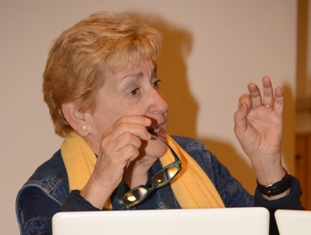 This guide was prepared by Elaine Gallagher and includes seven parts that UNONEWS will be publishing once a week. Being at the present time Director of Academic Relations of Sistema UNO, Elaine shares with us her vast experience at the classroom and beyond.
This guide was prepared by Elaine Gallagher and includes seven parts that UNONEWS will be publishing once a week. Being at the present time Director of Academic Relations of Sistema UNO, Elaine shares with us her vast experience at the classroom and beyond.
VII. Goleman’s Emotional Intelligence (developing emotionally stable students)
WHAT IS EMOTIONAL INTELLIGENCE?
In a 1994 report on the state of EMOTIONAL LITERACY in the USA, author Daniel Goleman stated,
“The price we pay is failed marriages, troubled families, mental anguish, and tragedies.”
EMOTIONAL INTELLIGENCE HAS FIVE ABILITIES:
- Self Awareness
- Mood Management
- Self-Motivation
- Empathy
- Managing Relationships
Key areas to develop in our classrooms with our students, in order to promote emotional intelligence include:
- Confidence
- Curiosity
- Self-control
- Relatedness
- Ability to Cooperate
- Capacity to Communicate
Every day can provide the opportunity to practice these abilities with our students.
We have to be role models for students and also exhibit strength in these areas.
WE NEED TO TEACH CHILDREN ABOUT EMOTIONAL INTELLIGENCE THE SAME WAY WE TEACH OTHER SUBJECTS.
EMOTIONAL HEALTH IS FUNDAMENTAL TO EFFECTIVE LEARNING.
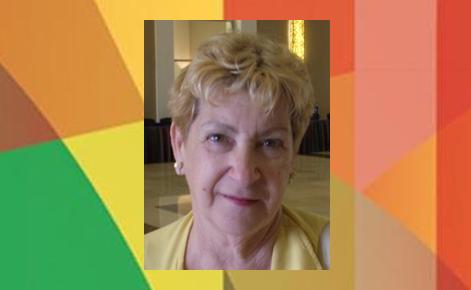 This guide was prepared by Elaine Gallagher and includes seven parts that UNONEWS will be publishing once a week. Being at the present time Director of Academic Relations of Sistema UNO, Elaine shares with us her vast experience at the classroom and beyond.
This guide was prepared by Elaine Gallagher and includes seven parts that UNONEWS will be publishing once a week. Being at the present time Director of Academic Relations of Sistema UNO, Elaine shares with us her vast experience at the classroom and beyond.
VI. Gardener’s Multiple Intelligences (meeting students’ learning modes)
Which ones are your strengths? How can you best meet your students’ needs and learning styles?
…..By using these kinds of activities.
Types of Intelligence
- Linguistic intelligence
- Logical-mathematical intelligence
- Spatial intelligence
- Bodily-kinesthetic intelligence
- Musical intelligence
- Interpersonal intelligence
- Intrapersonal intelligence
- Naturalist
How should we use M.I.?
- We tend to teach using the ways that we learn.
- We can identify the intelligences of our learners and teach them how to develop different strategies.
- Vary activities to include different intelligences each day.
- Identify which ones you use in your planner so you can be more conscious of them.
Ideas and Activities
Using Knowledge about Multiple Intelligences to Enhance Your Class
To stimulate your students’ learning preference styles, use some of these activities. Remember, activities practiced in some areas, will strengthen others.
Verbal/Linguistic
- Keep a journal or a diary
- Write a poem
- Make a word web
- Read a book, a novel, a poem, or an essay
- Tell story or a tall tale
Logical / Mathematical
- Brainstorm ideas
- Decipher codes
- Discover or invent patterns
- Make a graph
- Solve logic puzzles
- Make predictions
- Use spreadsheet software
Visual / Spatial
- Imagine or pretend, and then draw it
- Build or draw in 3-D
- Make puppets
- Practice drawing with perspective, shading, coloring
- Play with geometric shapes
- Make or read a map
- Drawing, clay work
- Putting together a puzzle
- Making a floor plan
Musical/ Rhythmic
- Use musical software
- Create a song, poem, or chant
- Learn an instrument to play
- Sing in a chorus
- Listen to music of different times and cultures
- Evaluate music that you like and don’t like, and why
- Singing, chanting, clapping to a song
Bodily / Kinesthetic
- Perform a play or a skit
- Act out a role
- Perform a dance
- Clapping to a beat
- Marching
- The game “Musical Chairs”
- Play sports
- Do science with experiments
- Put together a puzzle
Naturalist
- Go to a zoo, farm, aquarium, or forest
- Observe planets, stars, comets, space
- Visit environmental parks, the ocean , rivers, or lakes
- Watch nature videos
- Learn taxonomy system and names
- Plant flowers or a tree
Interpersonal
- Debate an issue
- Write a collaborative paper or report
- Mediate conflicts
- Plan an event
- Tutor a classmate
- Practice solving problems as a team
- Help others less fortunate than you
Intrapersonal
- Keep a “To Do “ list
- Prioritize items
- Observe your own mood changes
- Read silently
- Keep a private diary of your thoughts and ideas
- Write your autobiography
- Make your family tree
- Write an ethical code, rules of conduct
- Think about thinking
- Weigh alternatives
Try some of these ideas, teachers, and you will help to develop your students not only in English, but in multiple ways!
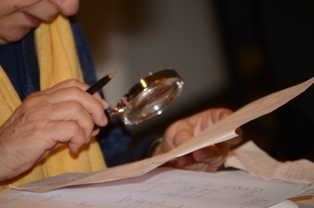 This guide was prepared by Elaine Gallagher and includes seven parts that UNONEWS will be publishing once a week. Being at the present time Director of Academic Relations of Sistema UNO, Elaine shares with us her vast experience at the classroom and beyond.
This guide was prepared by Elaine Gallagher and includes seven parts that UNONEWS will be publishing once a week. Being at the present time Director of Academic Relations of Sistema UNO, Elaine shares with us her vast experience at the classroom and beyond.
V. Dr. B. Bloom´s Taxonomy of Cognitive Thought
NOTE: The first two levels (Knowledge and Comprehension) are necessary for BASIC learning, but BLOOM said that we MUST get the students at least to APPLICATION level for REAL learning to rake place.
The higher we go on the Taxonomy, the more profound will the students be thinking, and therefore, learning for long term, not just for a test.
The words given under each level indicate the type of activity that can be done to help students reach that specific level.
OBJECTIVE: high level, critical thinking by reaching application level and beyond.
Any grade level can reach all of these, even Kindergarten. Simply have the activity appropriate for the age and vocabulary level of the students.
By changing the VERB in an activity, you can raise the level of critical thinking required to complete an activity, leading to more profound and long-term learning.
THE SIX LEVELS OF COGNITIVE LEARNING:
1. Knowledge
recall or recognize information, multiple-choice test, recount facts or statistics, recall a process, rules, definitions; quote law or procedure arrange, define, describe, label, list, memorize, recognize, relate, reproduce, select, state
2. Comprehension
understand meaning, re-state data in one’s own words, interpret, extrapolate, translate explain or interpret meaning from a given scenario or statement, suggest treatment, reaction or solution to given problem, create examples or metaphors; explain, reiterate, reword, critique, classify, summarize, illustrate, translate, review, report, discuss, re-write, estimate, interpret, theorize, paraphrase, reference, example
3. Application
use or apply knowledge, put theory into practice, use knowledge in response to real circumstances; put a theory into practical effect, demonstrate, solve a problem, manage an activity; use, apply, discover, manage, execute, solve, produce, implement, construct, change, prepare, conduct, perform, react, respond, role-play
4. Analysis (take apart)
interpret elements, organizational principles, structure, construction, internal relationships; quality, reliability of individual components; identify constituent parts and functions of a process or concept, or de-construct a methodology or process, making qualitative assessment of elements, relationships, values and effects; measure requirements or needs; analyze, break down, catalogue, compare, quantify, measure, test, examine, experiment, relate, graph, diagram, plot, extrapolate, value, divide
5. Synthesis (create / build)
develop new unique structures, systems, models, approaches, ideas; creative thinking, operations; develop plans or procedures, design solutions, integrate methods, resources, ideas, parts; create teams or new approaches, write protocols or contingencies; develop, plan, build, create, design, organize, revise, formulate, propose, establish, assemble, integrate, re-arrange, modify
6. Evaluation
choose, decide which is better or best, weighted opinions of things, assess effectiveness of whole concepts, in relation to values, outputs, efficacy, viability; critical thinking, strategic comparison and review; judgment relating to external criteria; review, justify, assess, present a case for, defend, report on, investigate, direct, appraise, argue, project-manage.
 This guide was prepared by Elaine Gallagher and includes seven parts that UNONEWS will be publishing once a week. Being at the present time Director of Academic Relations of Sistema UNO, Elaine shares with us her vast experience at the classroom and beyond.
This guide was prepared by Elaine Gallagher and includes seven parts that UNONEWS will be publishing once a week. Being at the present time Director of Academic Relations of Sistema UNO, Elaine shares with us her vast experience at the classroom and beyond.
IV. List of high frequency nouns (46 words compiled by Jerry L. Johns)
air feet (foot) Mr. time
back friend Mrs. top
book girl name town
boy group night tree
car hand nothing water
children head people way
city home place year
day house road
dog man room
door men school
eye money side
face morning table
father mother thing

